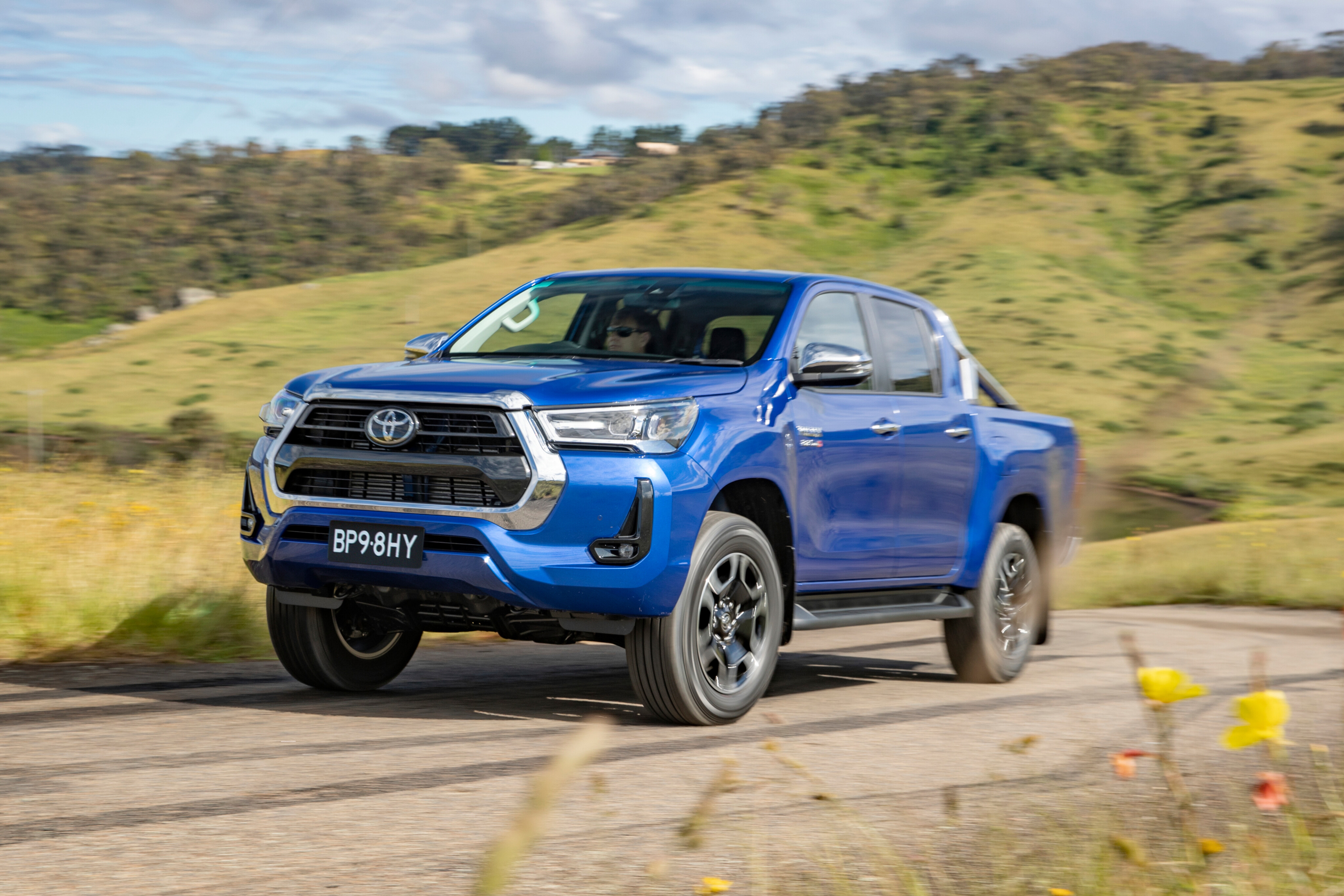
Australia’s top-selling vehicle – the Toyota HiLux ute – is on the path to electrification.
Snapshot
- Electrified 2024 Toyota HiLux!
- Mild-hybrid system confirmed for SR5 and Rogue dual-cab variants, optional for SR
- Due to arrive in Australia in the first half of 2024
An update for the 2024 Toyota HiLux will introduce a 48-volt mild-hybrid system, the brand has confirmed.
Due to arrive in Australia in the first half of 2024, the electrified powertrain will be standard for the SR5 and Rogue 4x4 dual-cab variants, and available as an option for the SR 4x4 dual-cab.
The mild-hybrid system will be paired to the HiLux’s familiar 150kW/500Nm 2.8-litre four-cylinder diesel engine, six-speed automatic transmission and 12-volt auxiliary battery, with an additional 48-volt battery, a small electric motor-generator, and “other components”.

Toyota claims the system will reduce fuel consumption by around 10 per cent, from 8.4L/100km to approximately 7.6L/100km – in line with four-wheel-drive Ford Rangers fitted with the 2.0-litre bi-turbo diesel engine.
A stop-start system to automatically turn off the engine when it is idling will be added to mild-hybrid variants, while the technology is also said to improve drivability and reduce the engine’s noise, vibration and harshness.
"We are continually striving to reduce the fuel consumption of our vehicles to help reduce on-going costs for customers, as well as helping reduce our environmental impact, and the addition of 48-volt technology to our biggest-selling vehicle line will contribute to this," said Toyota Australia vice president of sales and marketing, Sean Hanley.
"This new technology will not only improve fuel consumption, but customers will also benefit from enhanced on and off-road performance, making the HiLux even more appealing for a weekend away or longer term excursion into the outback.”
Toyota has confirmed the mild-hybrid system “will not have any impact on the capability of the HiLux”, with all 4x4 models set to maintain a 3500-kilogram braked towing capacity.
It is unknown if the update will introduce minor tech updates – such as rear disc brakes on more variants and a larger, updated infotainment system with wireless Apple CarPlay – to better match the Ford Ranger, which could overtake the HiLux to become Australia's top-selling vehicle in 2023.
The 2024 Toyota HiLux mild-hybrid will arrive in the first half of next year, with further details to be announced closer to launch.

Toyota has yet to confirm if the related Fortuner off-road large SUV will receive the 48-volt mild-hybrid system, while the next-generation LandCruiser Prado – expected here in 2024 – could have this powertrain as its base engine.
A series-parallel 2.4-litre turbocharged four-cylinder petrol-electric hybrid system is also likely to be offered as the 2024 Prado’s flagship engine.
As previously announced, Toyota Australia plans to offer an electrified version of every model in its range by 2030 – including HiLux, LandCruiser and HiAce – but not GR performance cars.
Earlier this year, Sean Hanley said Toyota is also evaluating other forms of electrification for the HiLux, including full-electric and hydrogen.
"Well, there's hybrid. You know, plug-in hybrid, there's all sorts of variants. We've been looking at H2 (hydrogen) conversions, we're looking at [battery-electric vehicles], we're looking at everything. This is exactly what we're saying, that Toyota won't put all of its eggs in one basket," he said.
A series-parallel hybrid is likely for the next-generation HiLux, due around 2025.



COMMENTS